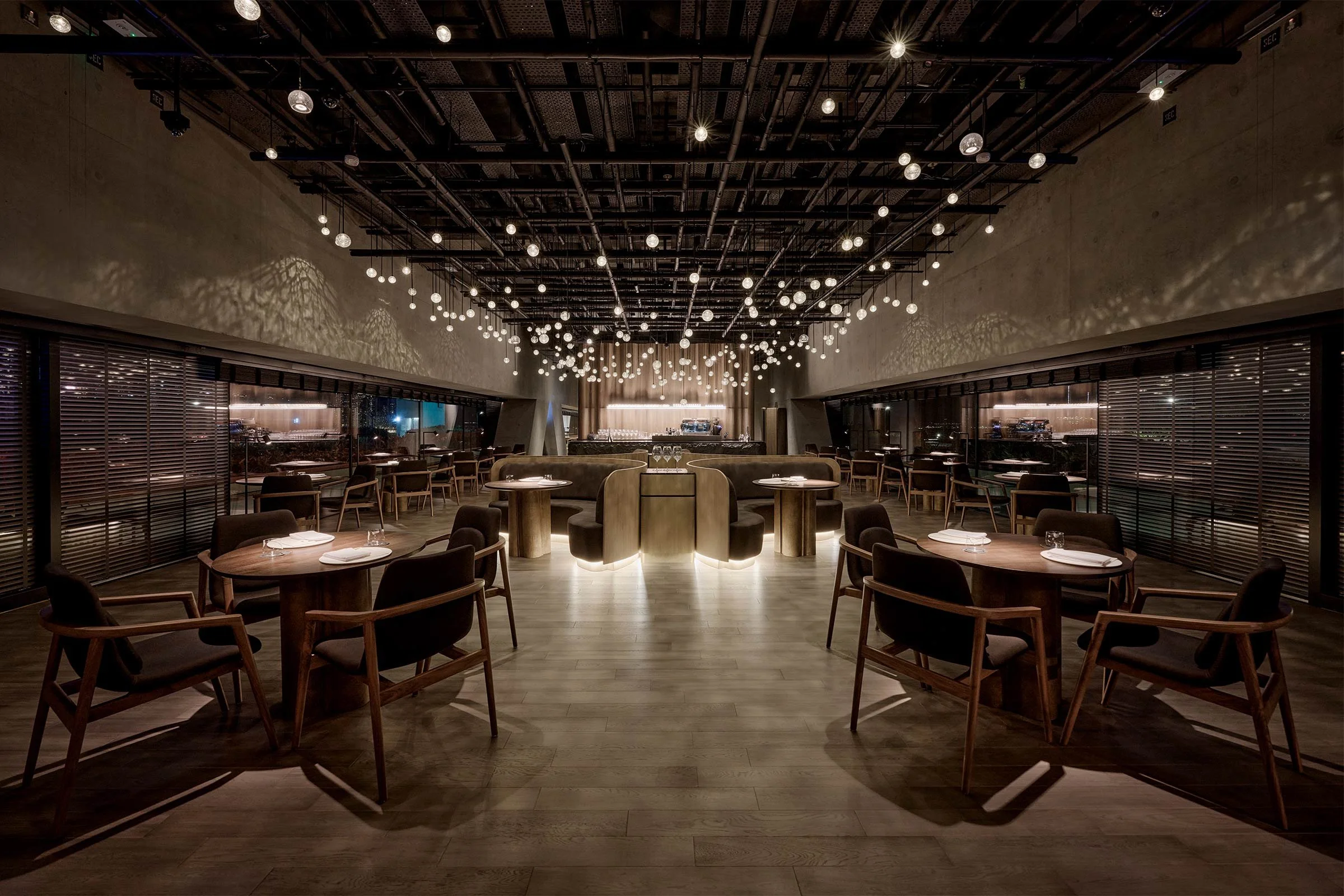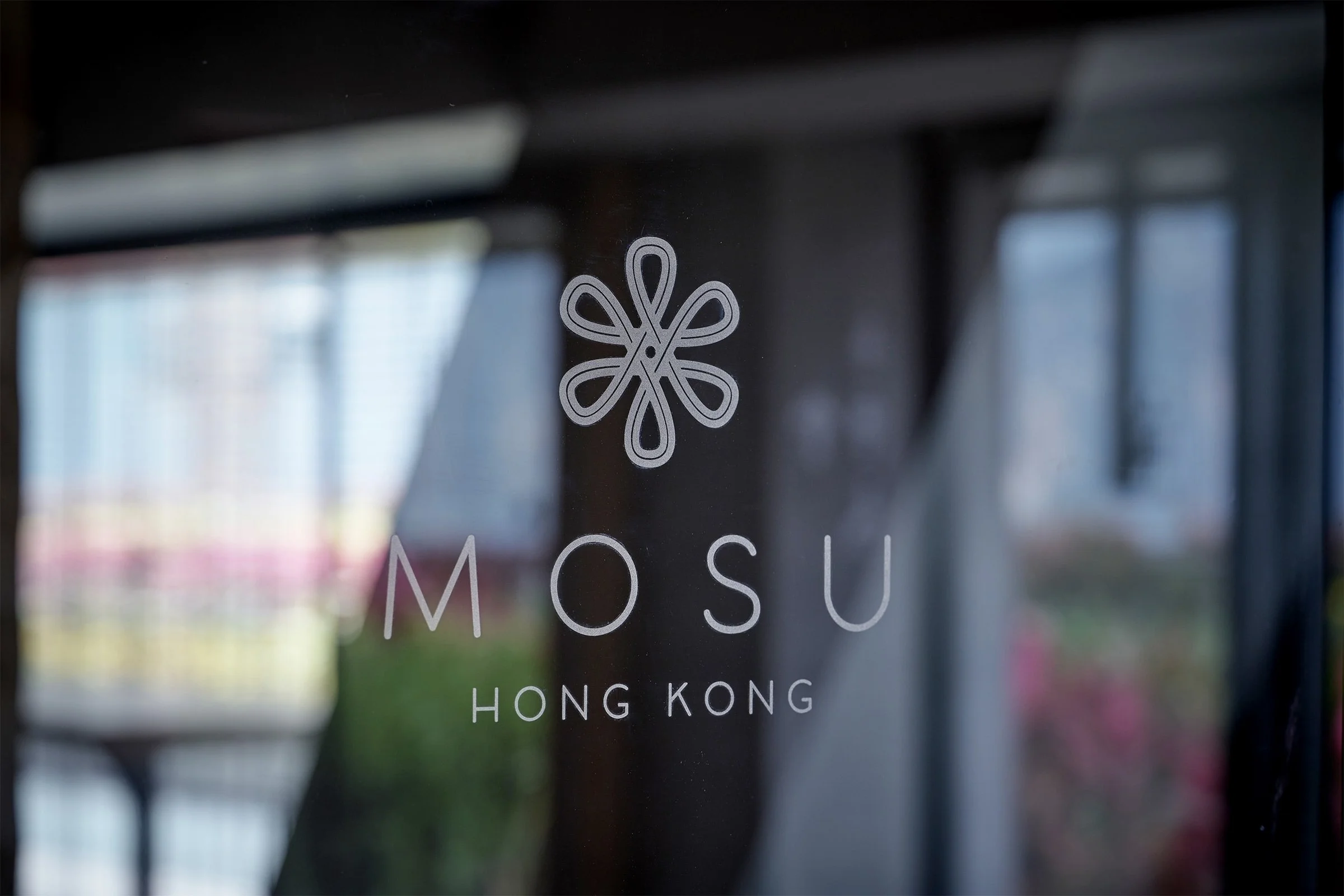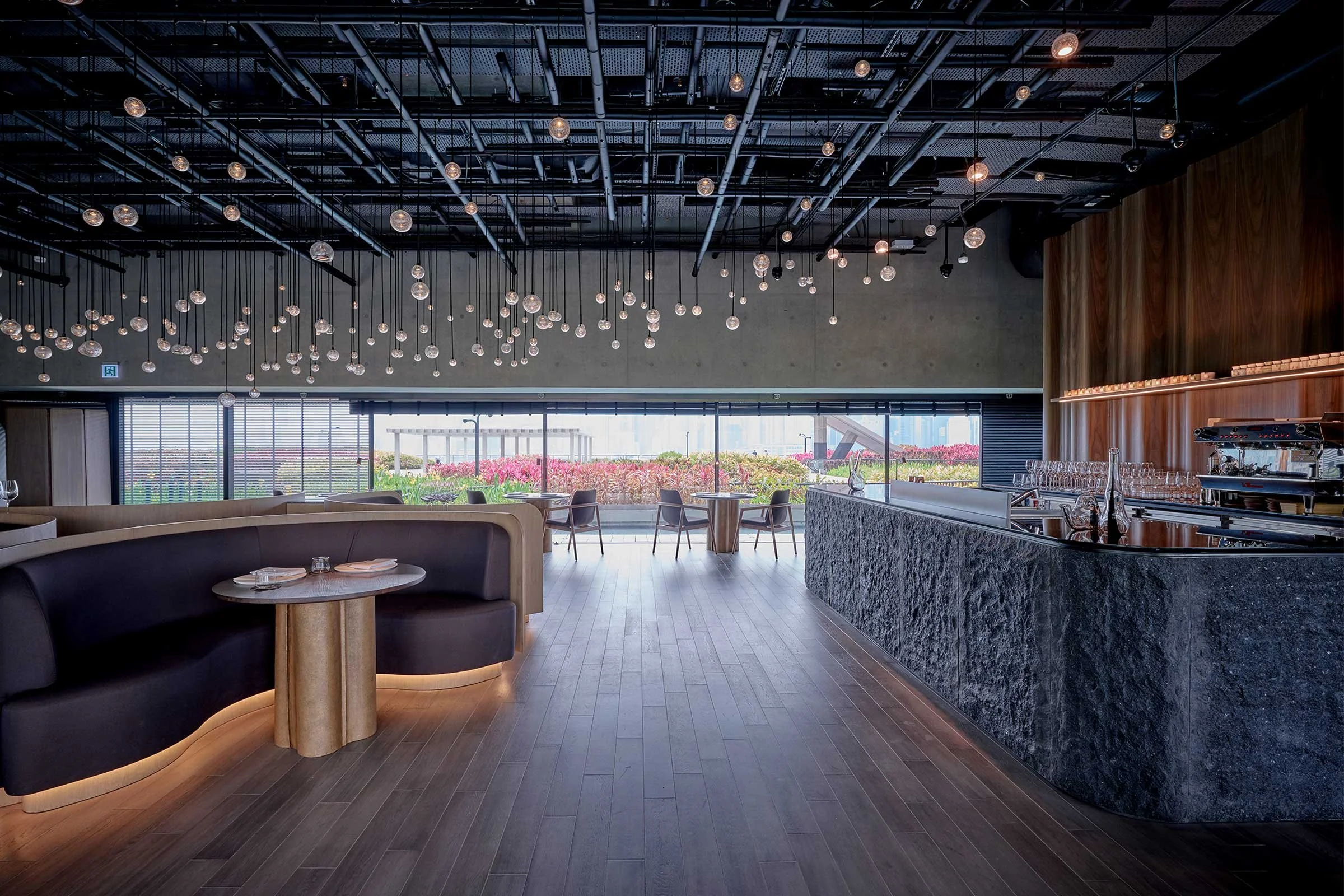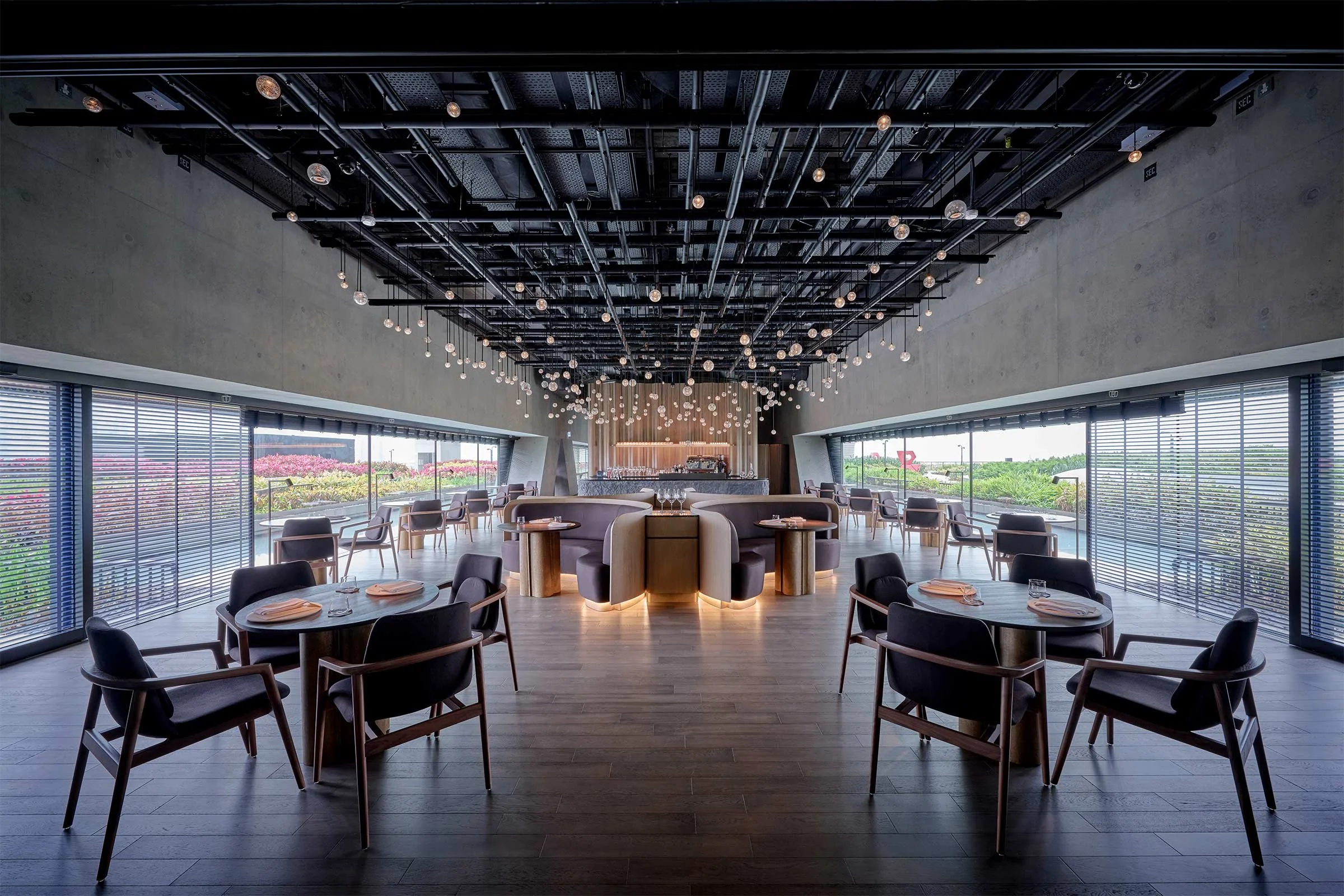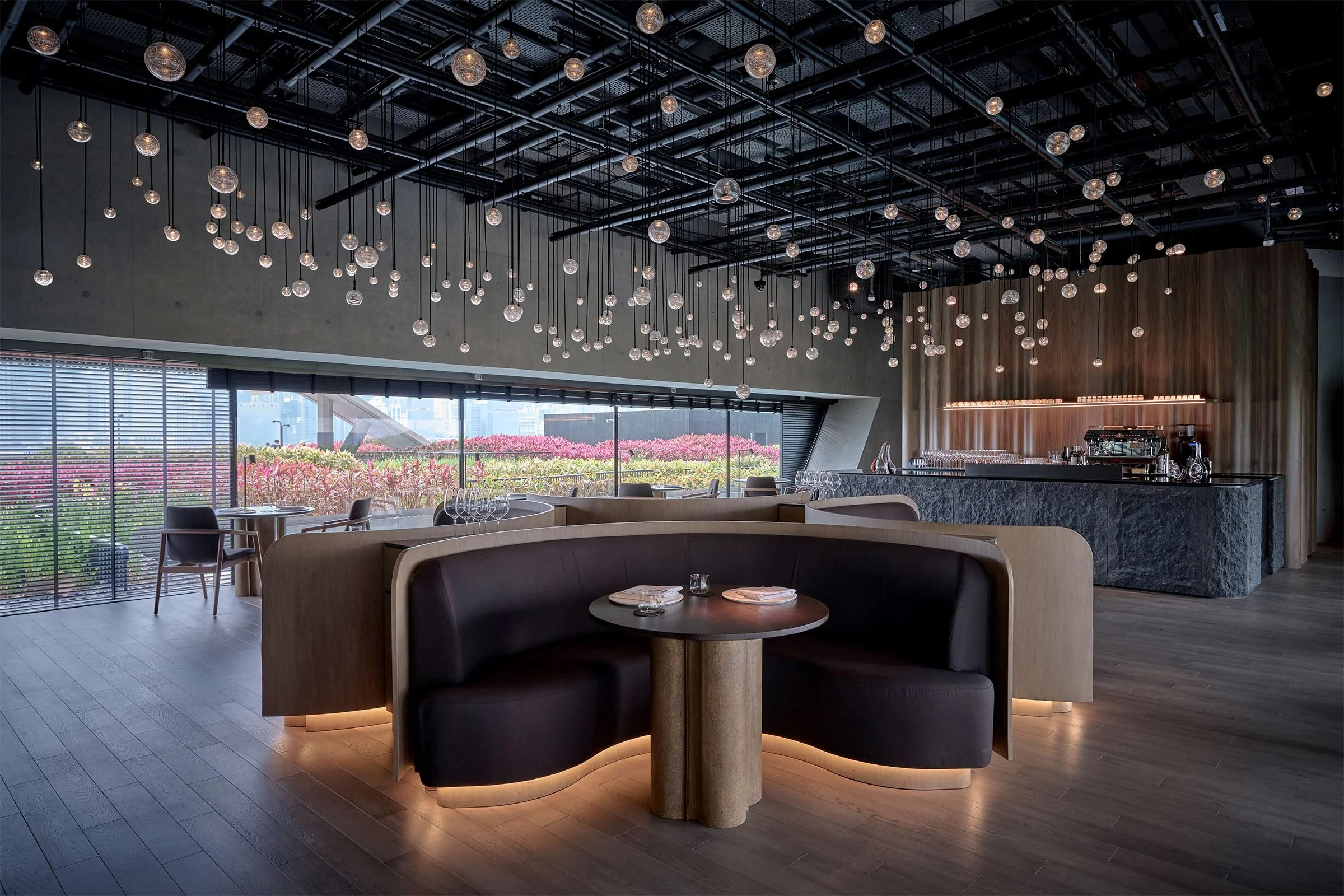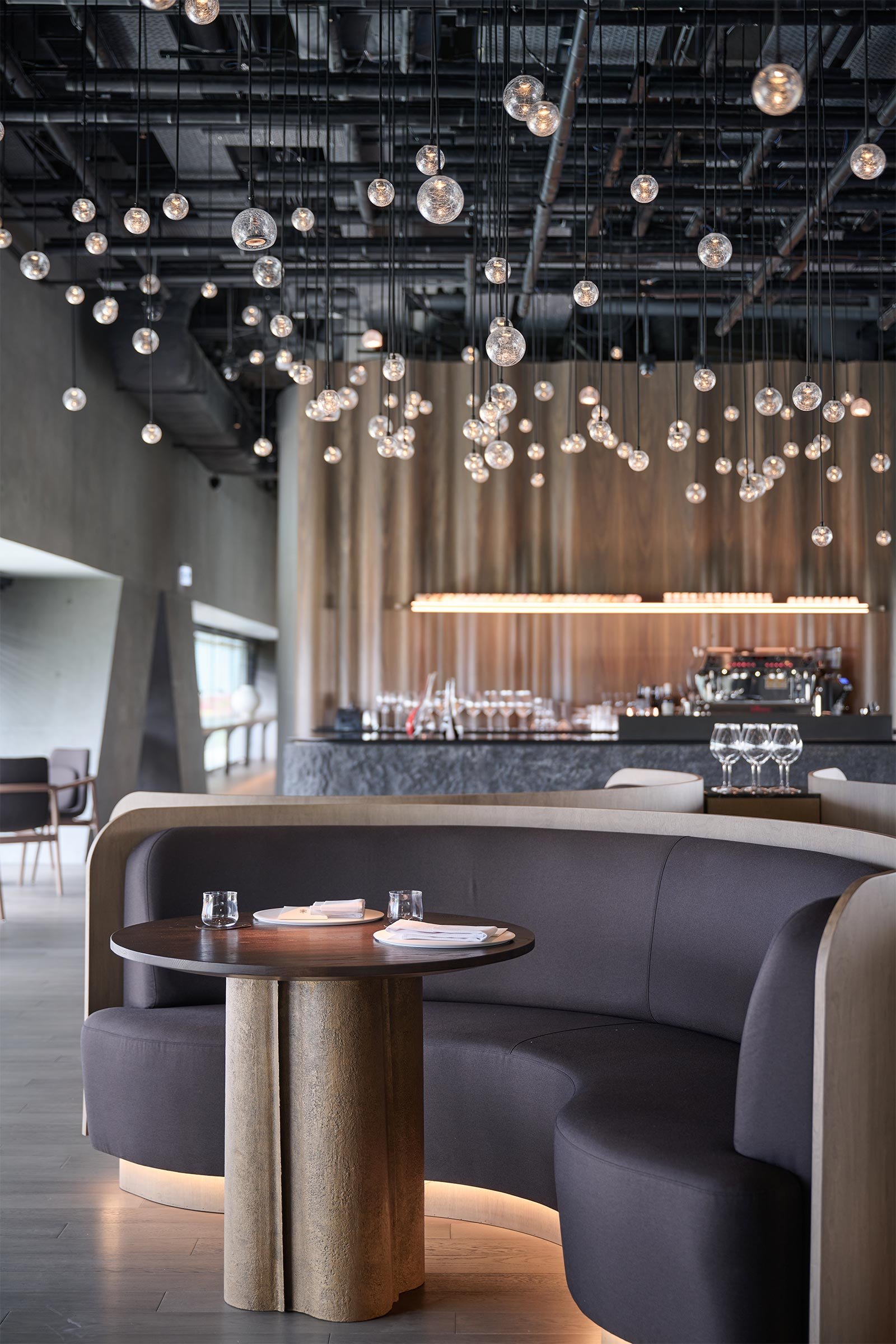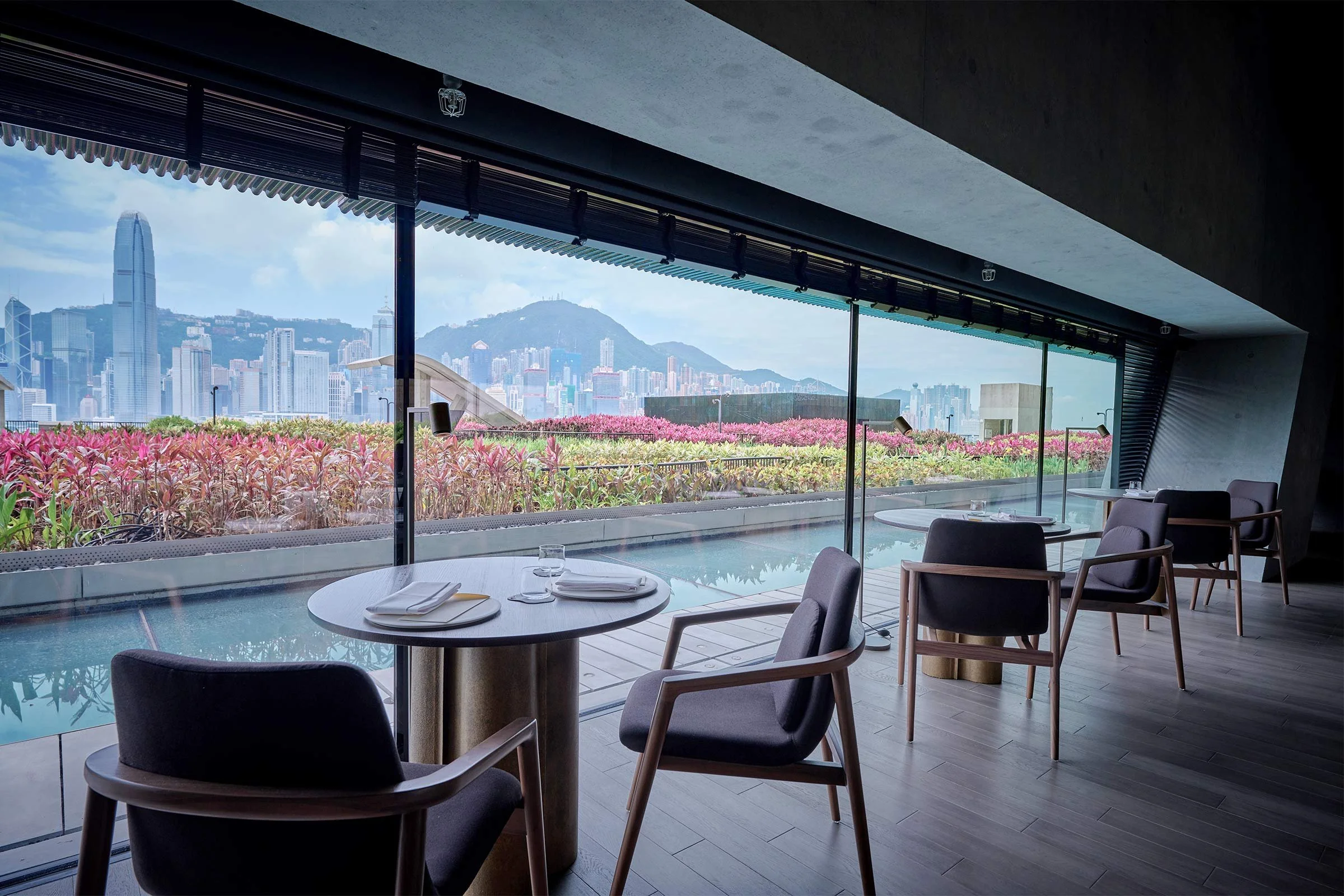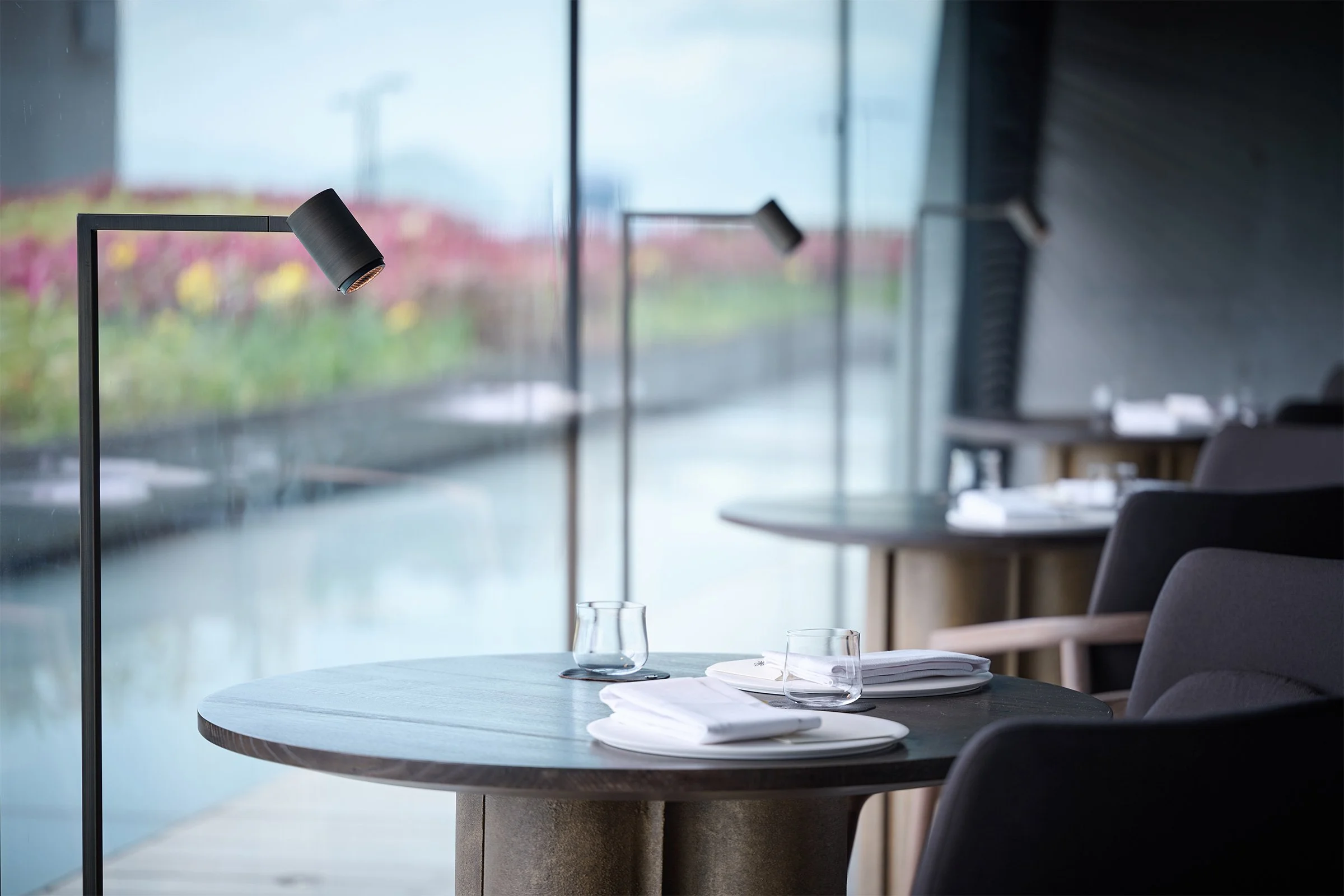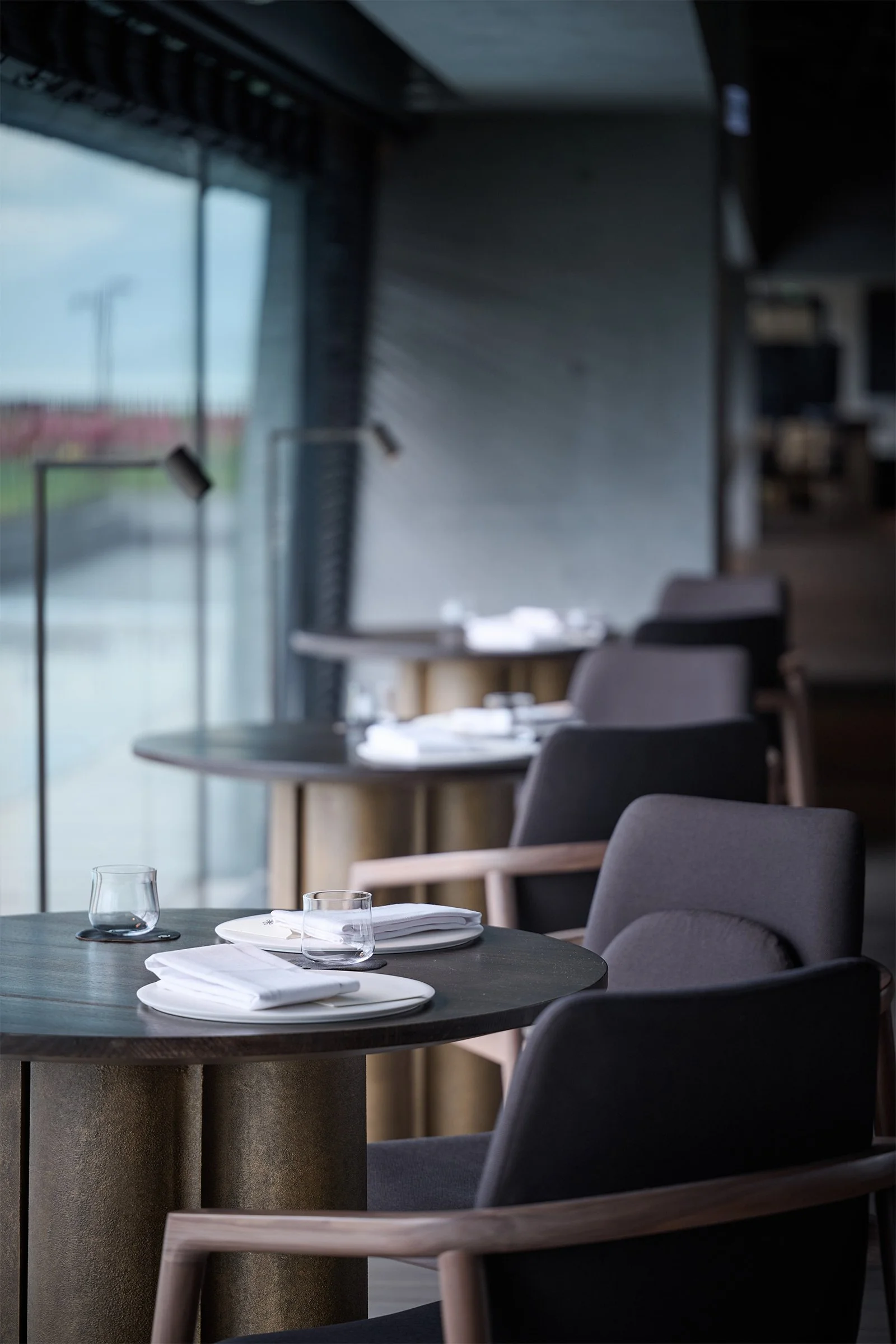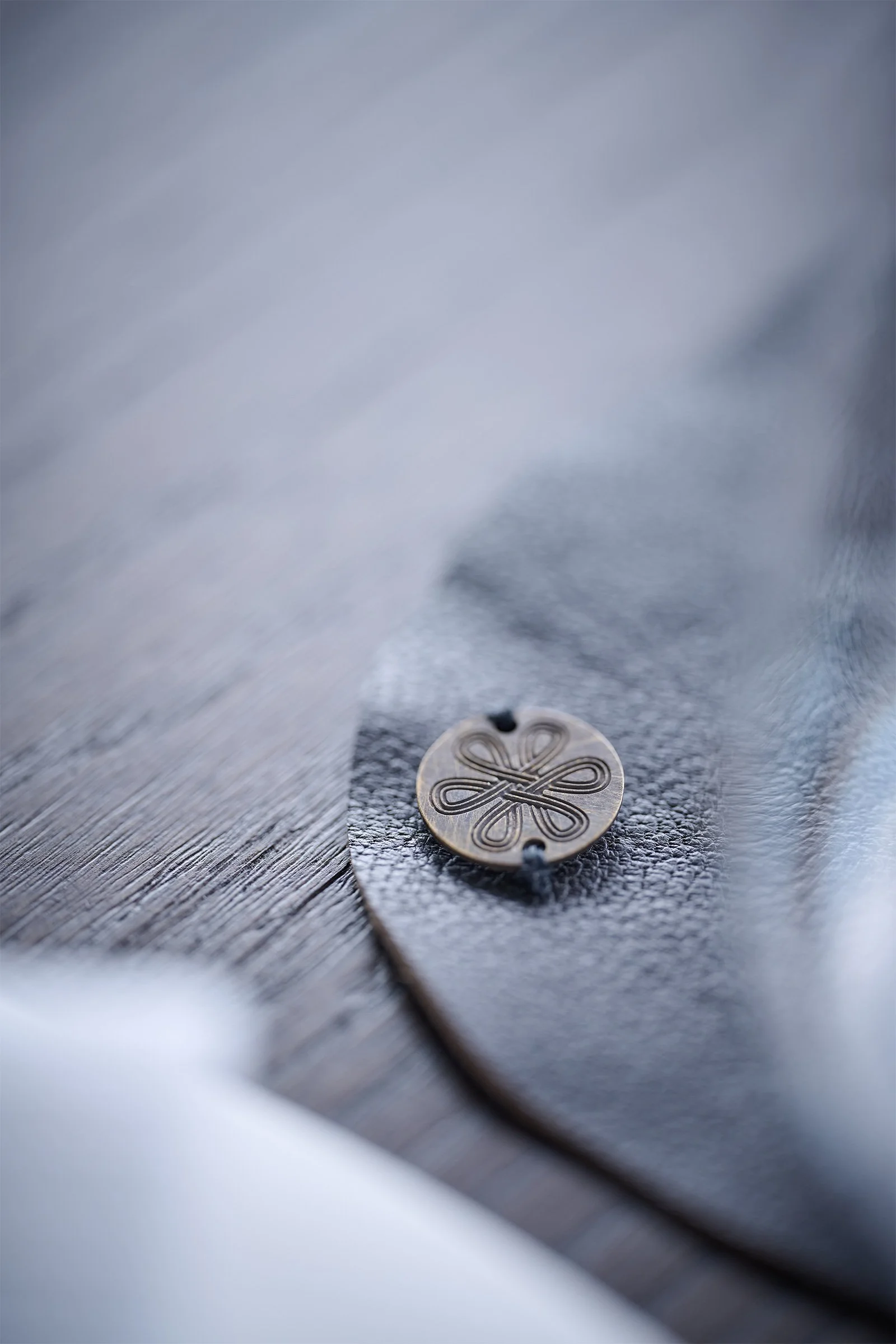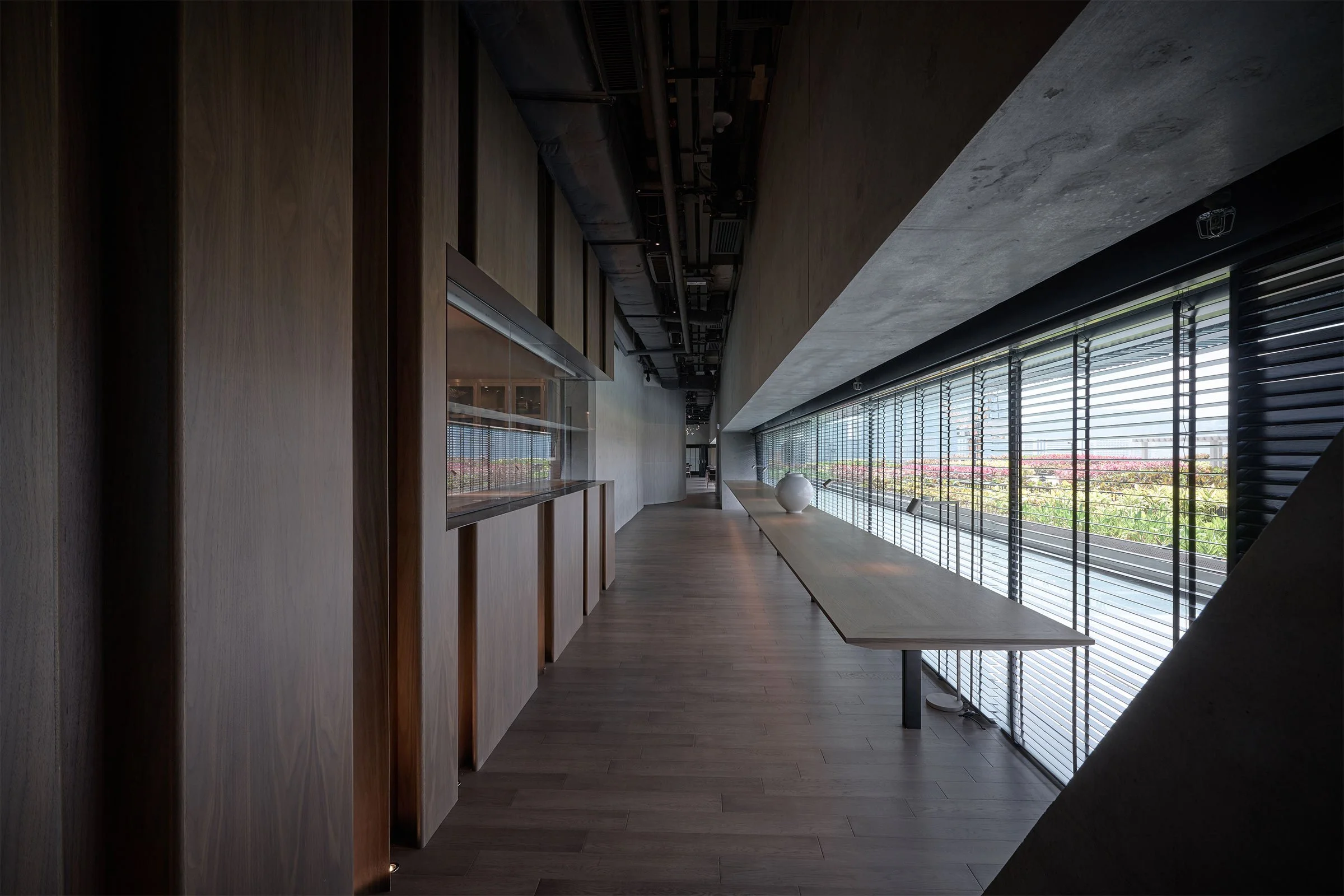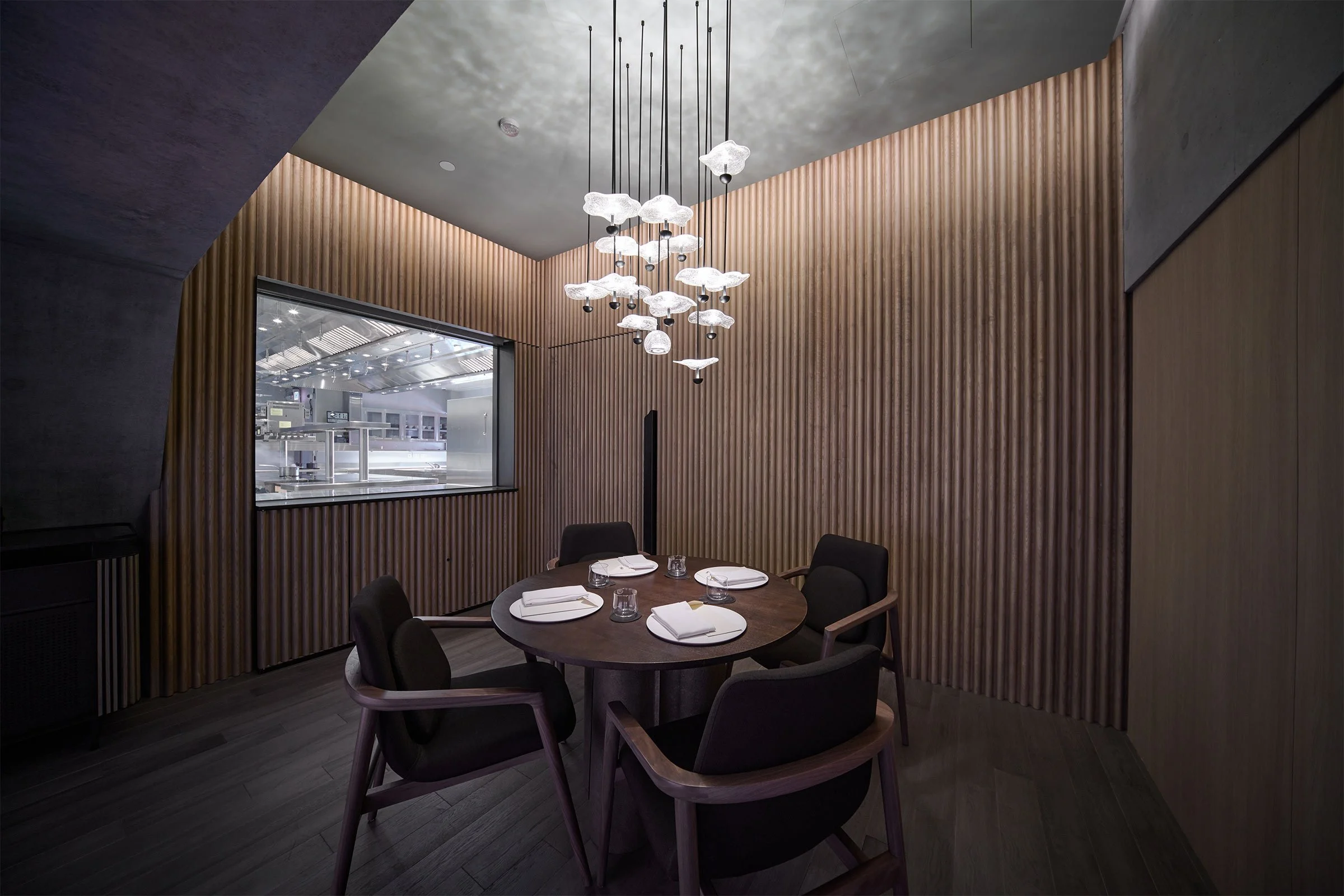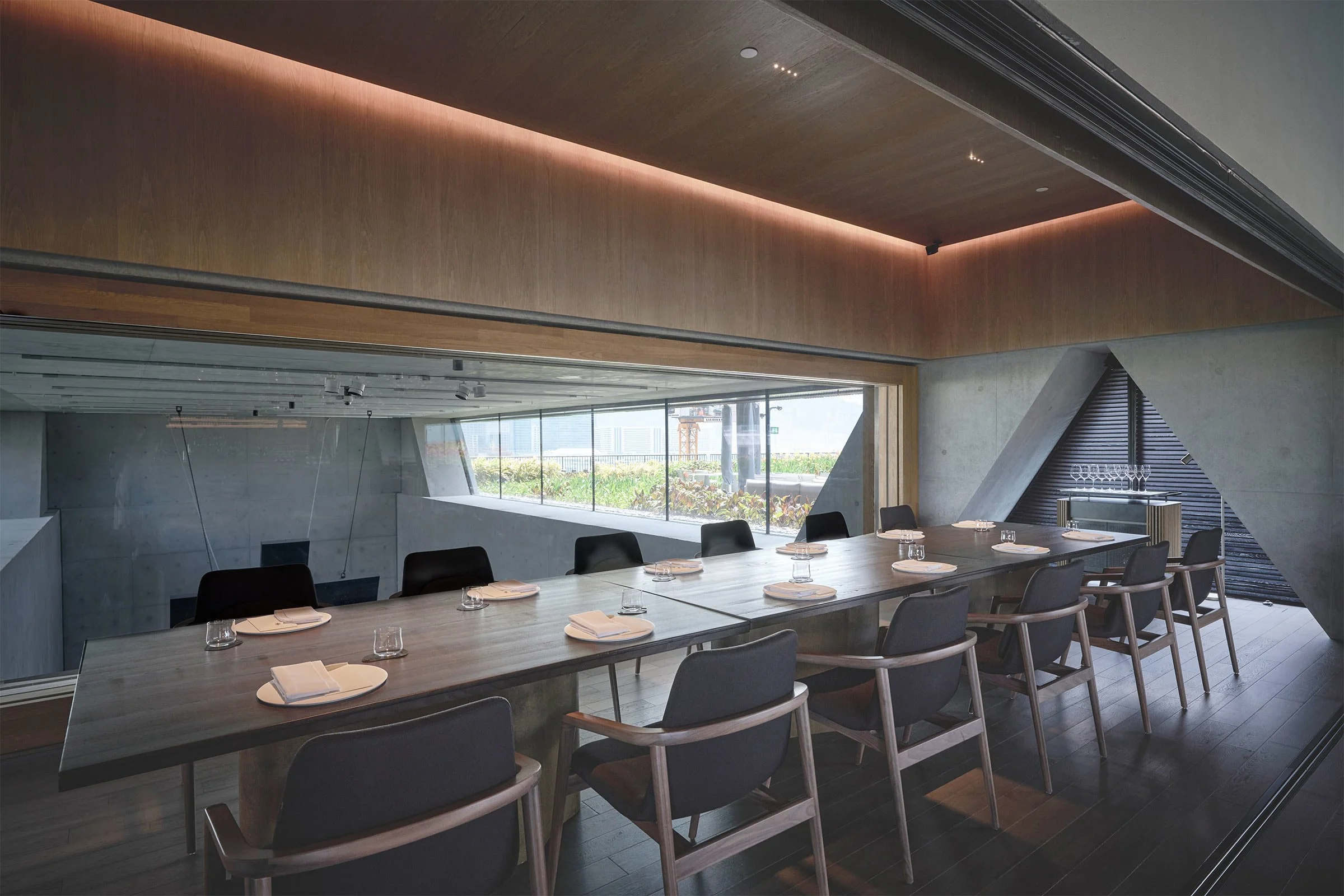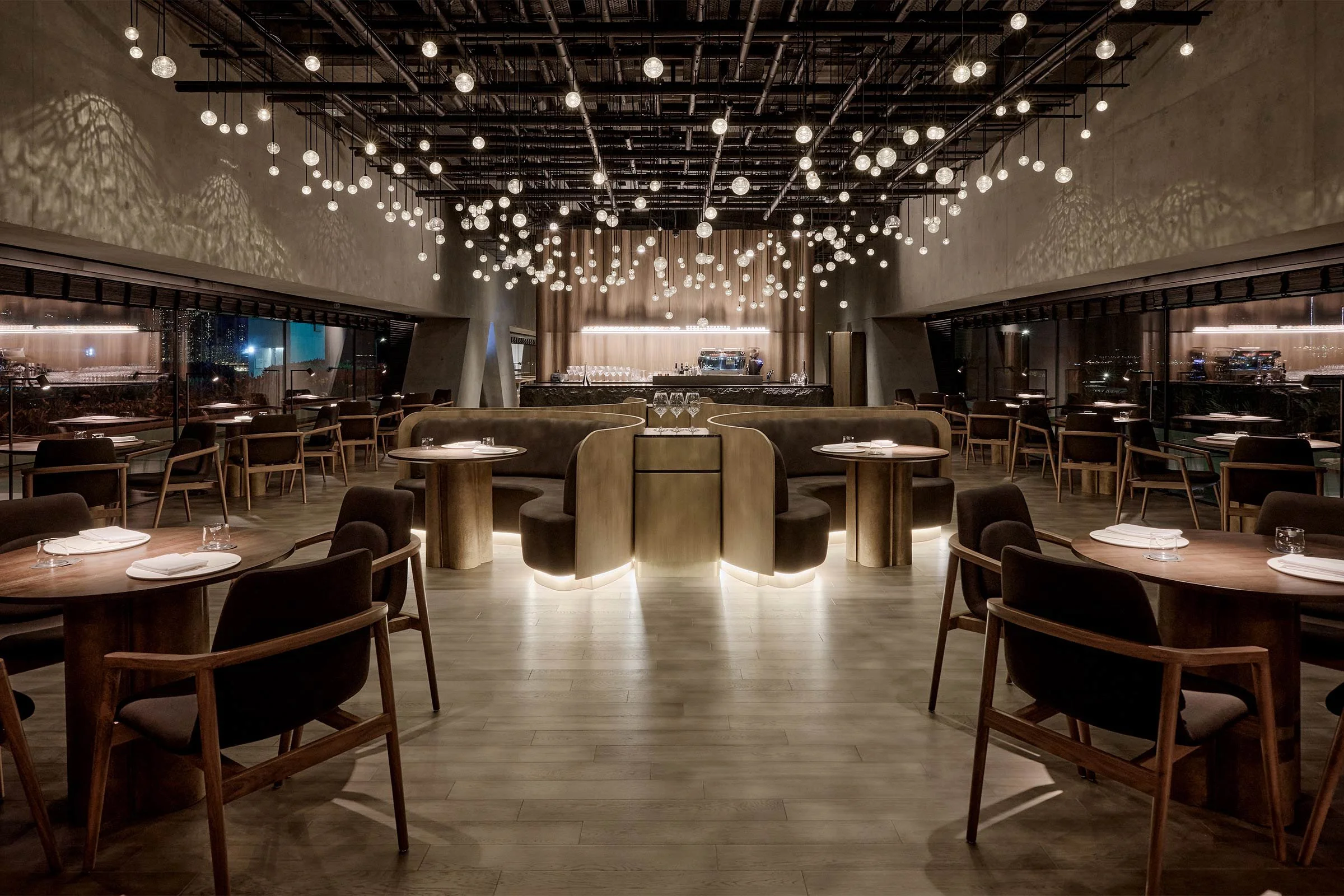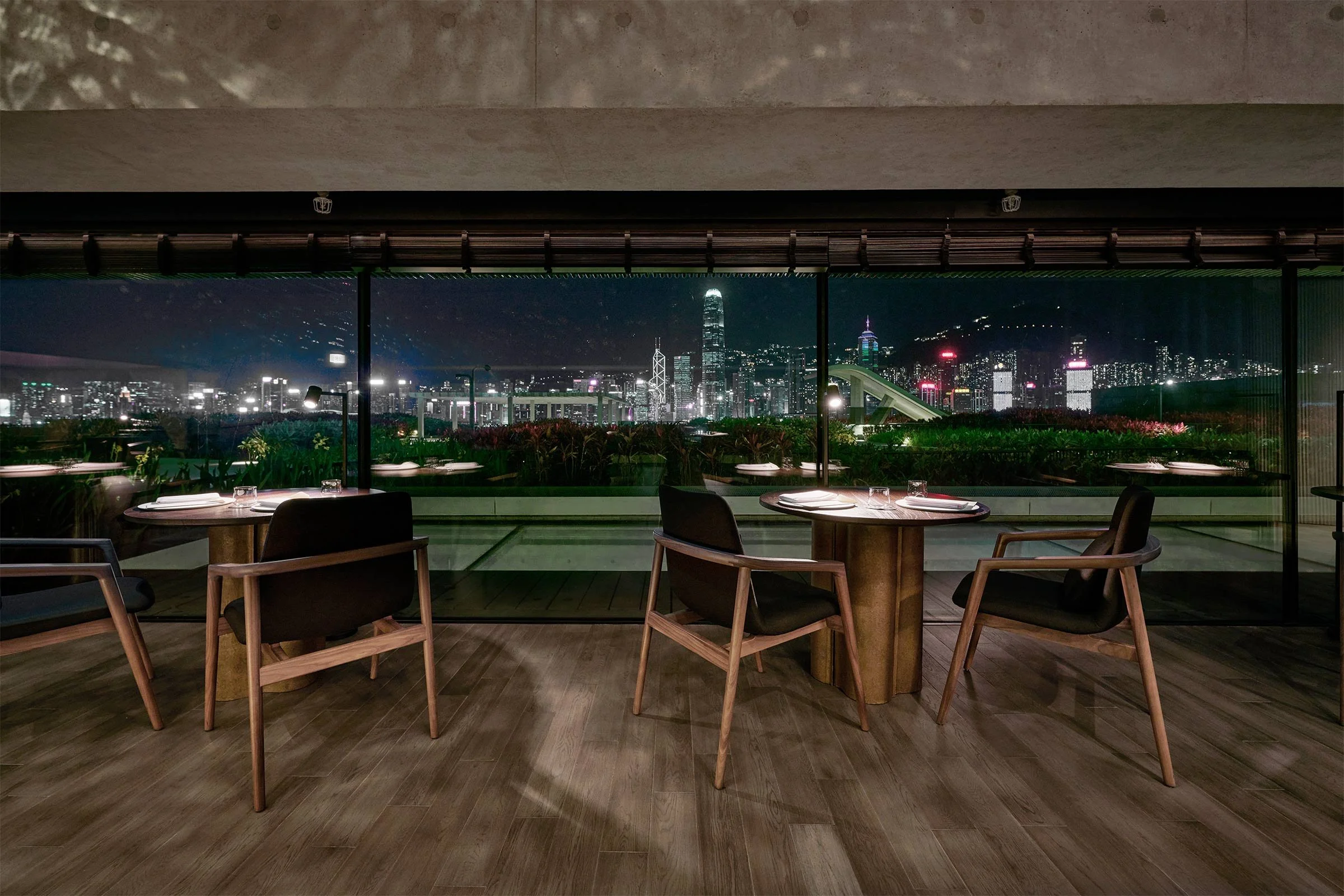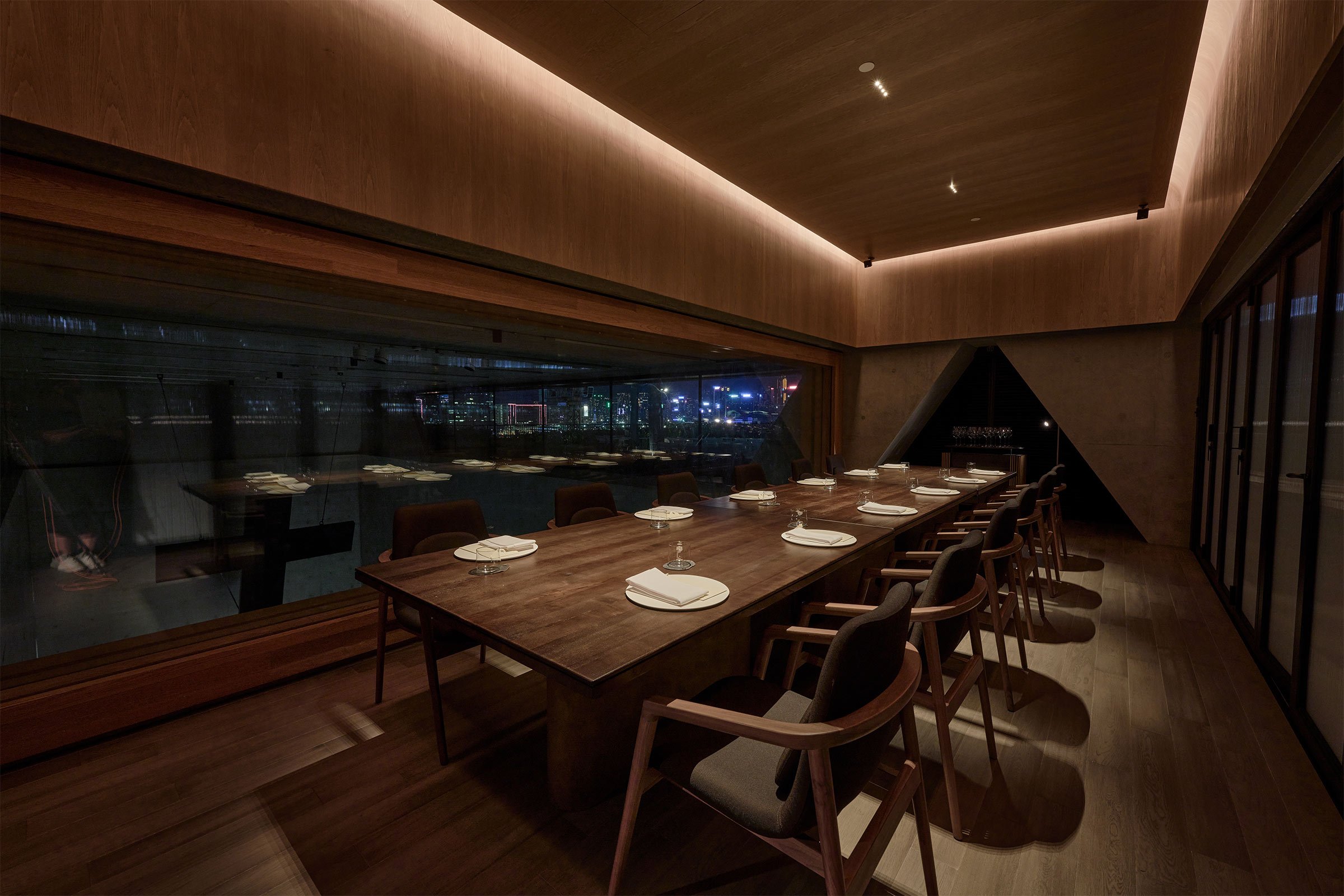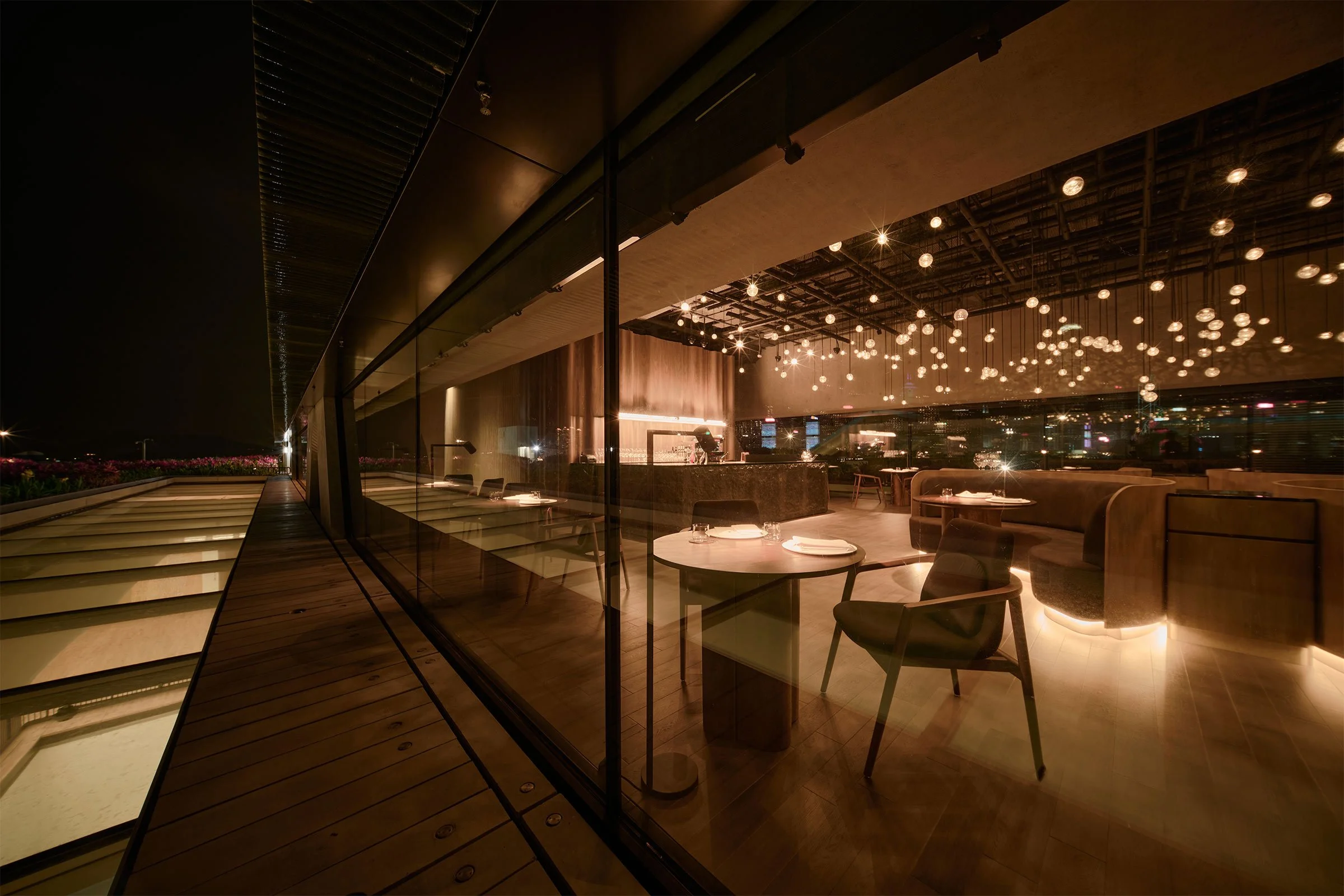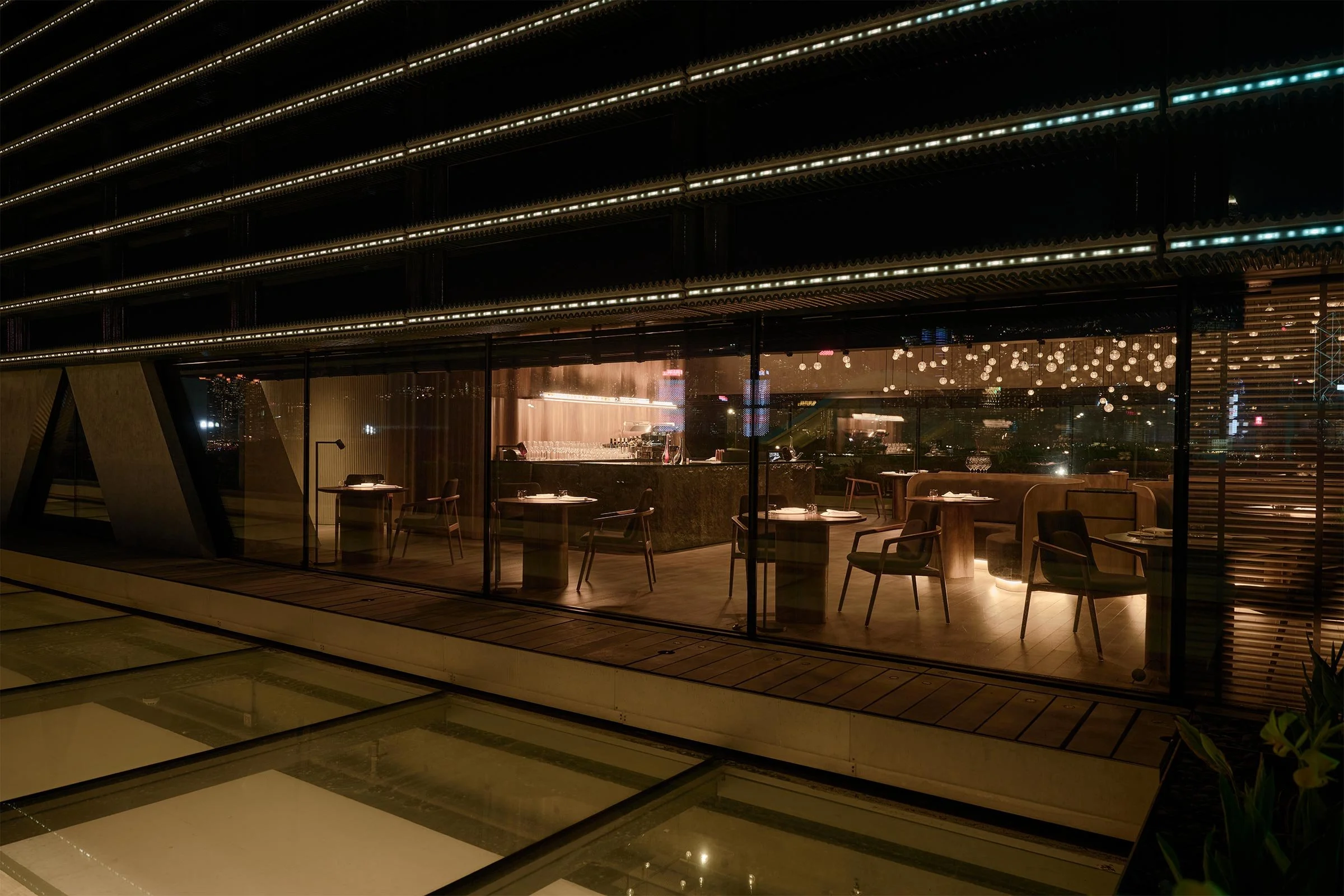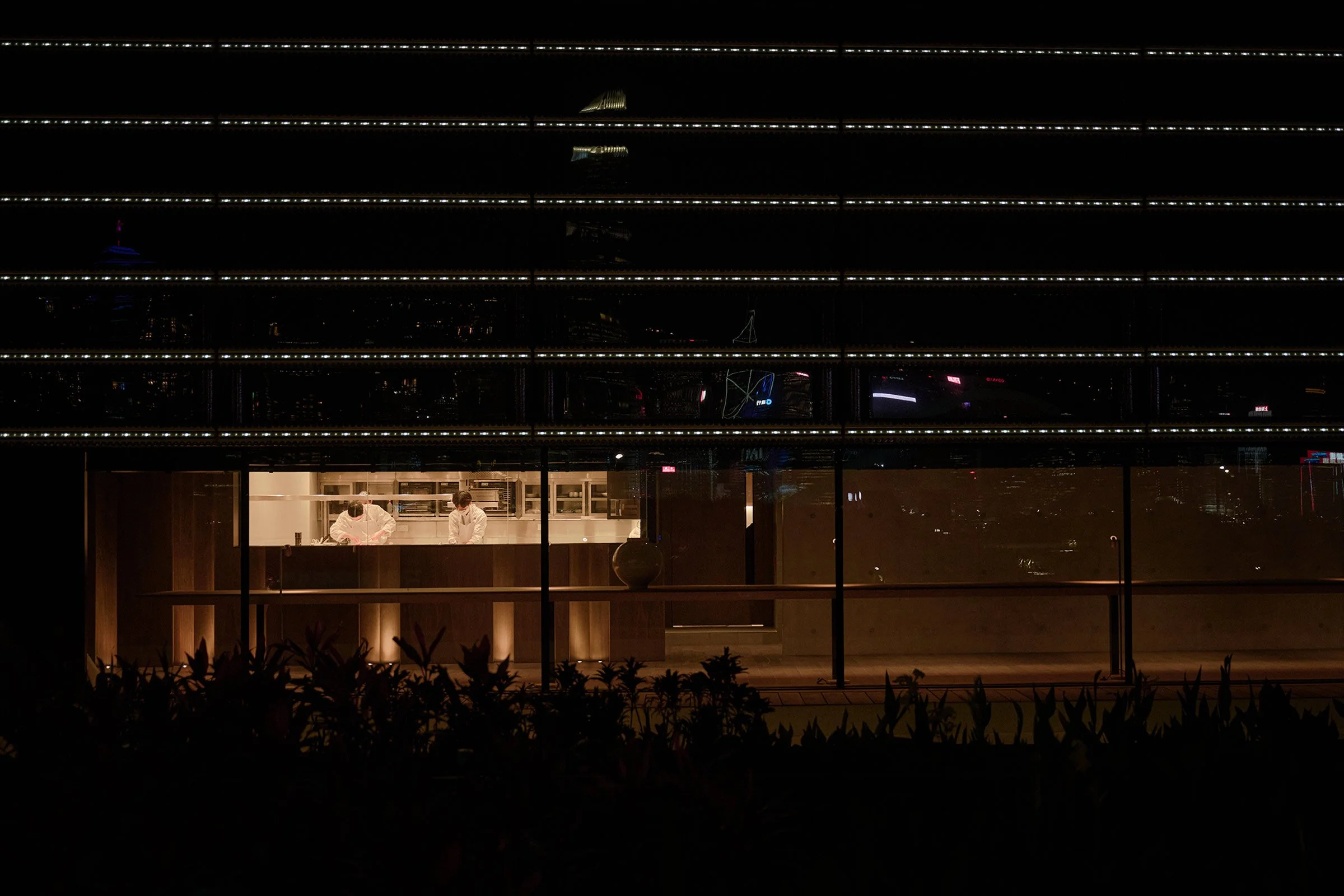Mosu Hong Kong Opens at M+
Seoul’s famed Michelin-starred restaurant Mosu gets a sister restaurant at Hong Kong’s M+ museum with a subtle space designed by multidisciplinary studio LAAB
Hong Kong’s new museum of visual culture, M+, finally opened its doors at the end of 2021. After almost a decade of planning, the new cultural landmark houses unique collections of visual art, design, architecture and moving image works. Two dining concepts designed by local multidisciplinary firm LAAB have since been added to complete the museum experience: ADD+, an all-day dining restaurant overlooking the Art Park Promenade, and on the museum’s Roof Garden level, Mosu, a sophisticated Korean fine-dining restaurant helmed by chef Sung Anh of two-Michelin-star Mosu Seoul.
Full-length windows encased in concrete beams frame the 50-metre-long dining space, which looks onto the roof garden and views of the harbour and city skyline. Inspired by this unique location, Mosu’s design echoes this meeting of digital and natural. ‘M+ is a place where arts, culture, people and the city meet,’ explains Otto Ng, design director at LAAB. ‘We wanted to illustrate this intersection through the design of Mosu.’
Cleverly divided into segments that flow along the length of the space, the 650-square-metre restaurant houses two private dining rooms and a main dining space anchored by a monolithic limestone bar. Timber floors and walls, walnut tables and chairs and fluted wooden panels contrast with the existing structure. ‘Working with the chunky concrete structure of the space was a challenge, so we tried to break the space into smaller pieces by manipulating it with layers,’ Ng explains. ‘Together with the use of fabrics and plants, these different structural layers help to absorb the sound and create a quiet and more intimate atmosphere.’
Individual window-facing booths are arranged around a digital light installation formed from dozens of glass spheres hanging above a flower bed — a poetic arrangement of dried flowers imagined as an extension of the garden. ‘Chef Sung Anh works with different types of natural ingredients and presents them in a very raw way, so we echoed that by using a palette of different raw natural materials for the space,’ Ng says. ‘He also pays attention to seasonality in his cuisine, so we wanted to represent the subtle changes of seasons through the flower bed, where the colours will naturally fade over time.’
But it’s the lighting that makes the space truly unique. ‘Time is an important element in all of our designs. We care a lot about how people experience the space at different times of the day,’ Ng says. ‘So we created very minimal, digitally controlled lighting to make sure that we present the best lighting experience throughout the day, whether it's sunny, cloudy or night time.’
Suspended at different heights from bamboo poles on the ceiling, twinkling glass bubbles create a play of shadows and bring the space to life. And when the sun sets and floods the space with golden light, shapes and textures come alive and the interiors and landscape become one.
Text / Nina Milhaud
Images / Calvin Sit Photography

